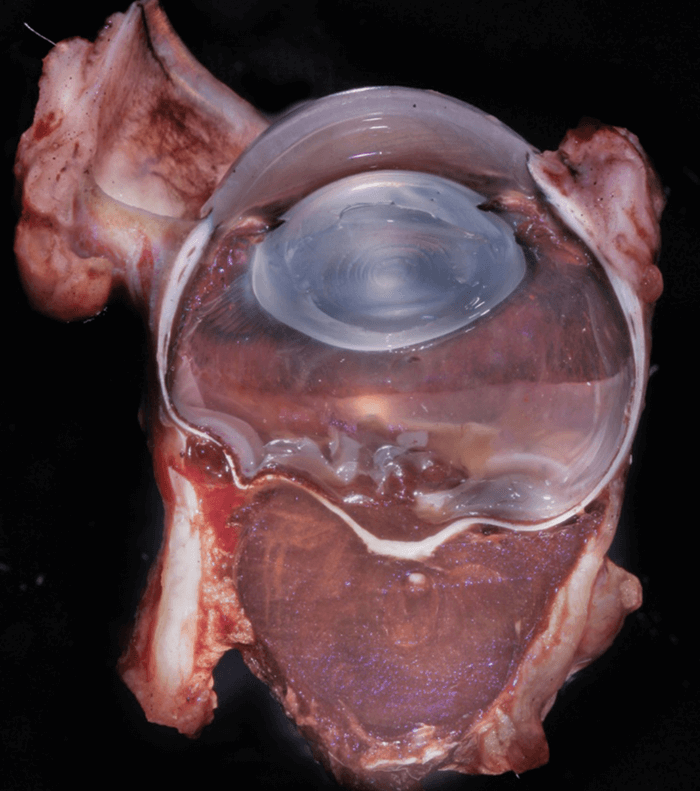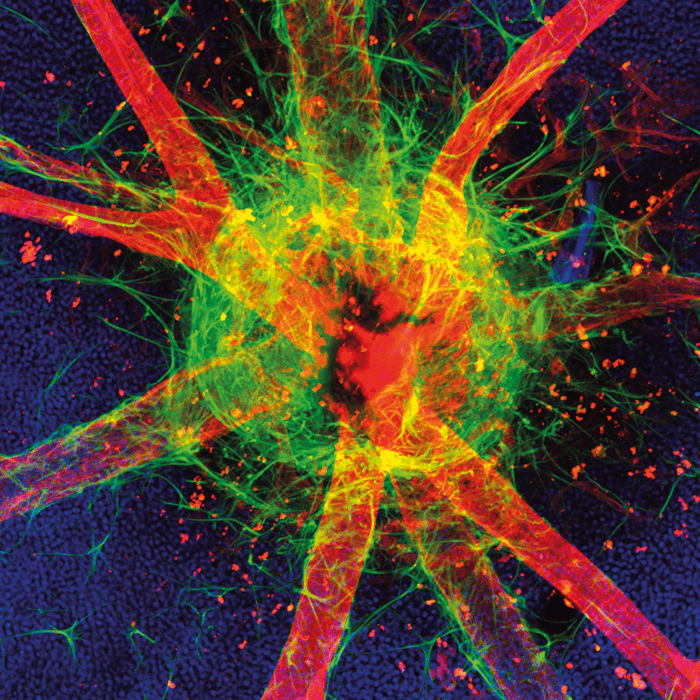
A normal mouse retinal flatmount depicting the optic nerve showing the retinal vasculature stained with isolectin (red) and GFAP (green) and DAPI.
A tertiary retinal lymphoid aggregate in a mouse with spontaneous uveitis. The staining shows the presence on microglia (red), B cells (green), and T cells (magenta) and DAPI.
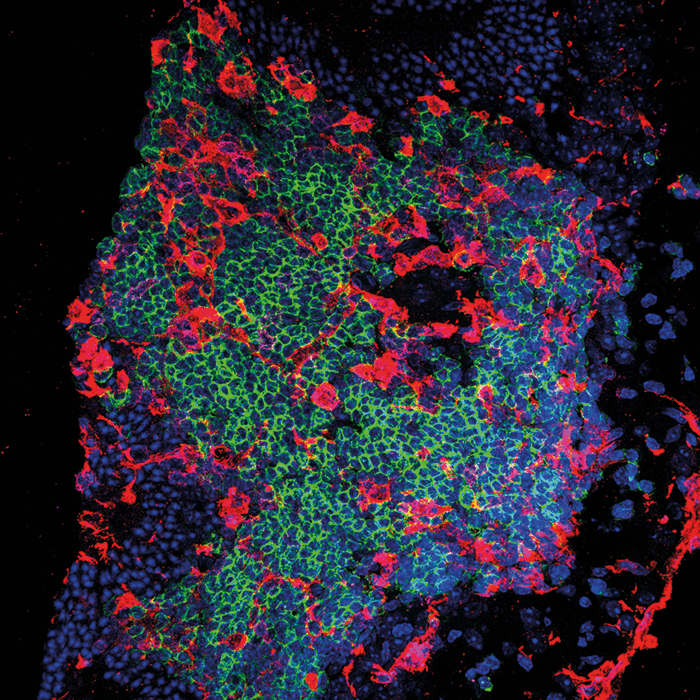
A mouse RPE flatmount with laser injury showing choroidal neovascularization. Staining shows phalloidin (RPE stained), isolectin (blood vessels), and DAPI.

A mouse retinal flatmount showing the retinal vasculature stained for isolectin (red) and DAPI. The mouse was virally infected with Zika virus.
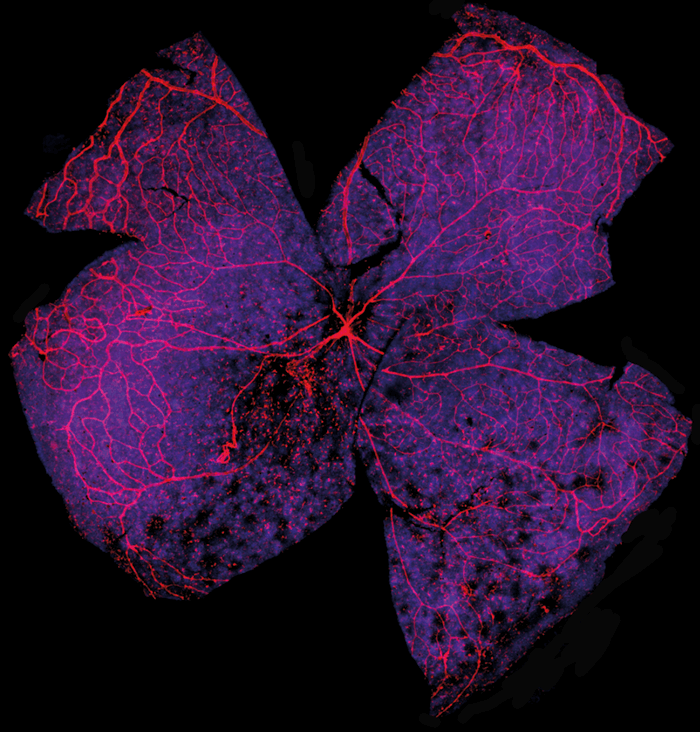
A normal mouse optic nerve head stained for synapsin, PKC-A, and GFAP and DAPI. This selection of images were contributed by Jennifer Kielczewski, a Staff Scientist with the National Eye Institute, Biological Imaging Core (BIC) in Bethesda, MD, USA. Her research interests include using imaging techniques to study retinal pathologies, ocular inflammation, and neuronal degeneration in diseased animal models.
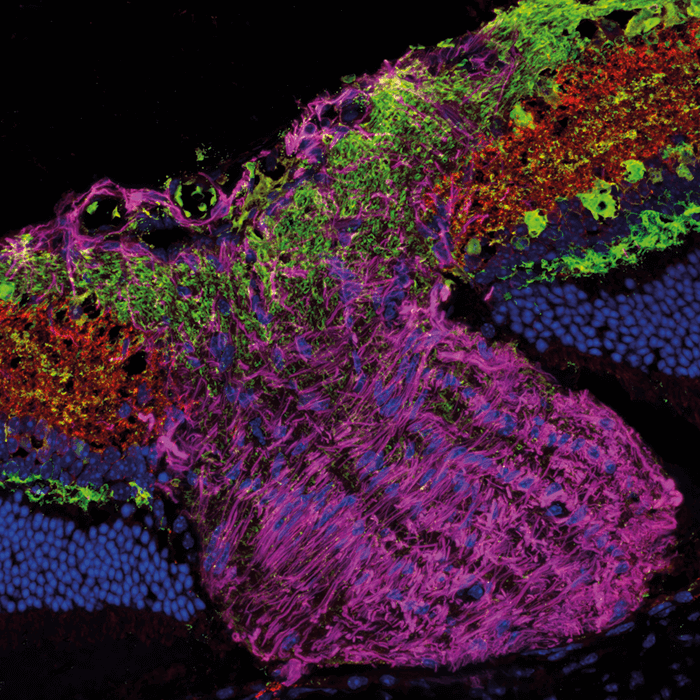
This is the globe of an adult cat with posterior scleral rupture due to presumed blunt trauma. The anterior chamber is collapsed and the pigmented iridal tissue lines the posterior cornea. Pigmented uveal tissue (likely ciliary body) stretches backwards and contacts fibrotic tissue at the posterior scleral rupture site. The lens capsule was ruptured and only recognized microscopically associated with the fibrotic tissue at the site of the posterior scleral rupture.
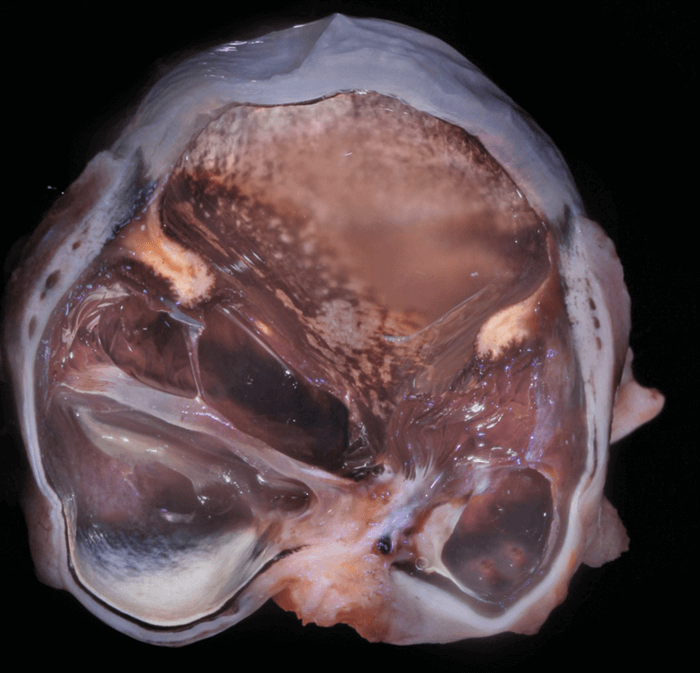
In this canine globe, a choroidal melanocytoma extended through the posterior sclera and formed a mass behind the globe. Though locally destructive, this type of benign melanocytic tumor rarely metastasizes. The Comparative Ocular Pathology Laboratory of Wisconsin (COPLOW), USA. Further images can be found on the COPLOW Facebook page: bit.ly/COPLOW.
